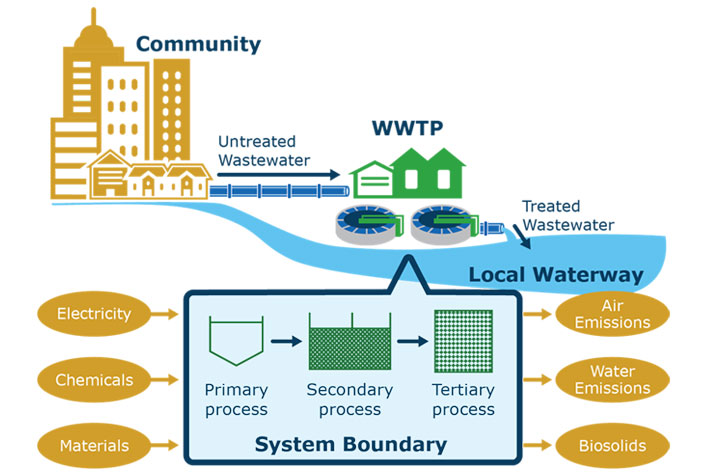Life Cycle Assessment of Wastewater Treatment Upgrade Options to Improve Nutrient Removal

Project Brief
The Challenge
Wastewater treatment plants can reduce nutrients in their effluent by utilizing technologies designed to achieve very low effluent nutrient concentrations. However, these impacts are not typically accounted for in the standard framework that governs nutrient emissions from WWTPs, and WWTP operators and stakeholders have expressed concern about the potential of these technologies to cause significant environmental harm. A 2021 life cycle assessment of generalized WWTP configurations by ERG and EPA demonstrated the potential for considerable increase in environmental impacts of technologies designed to achieve the highest level of nutrient removal. Subsequently, EPA engaged ERG to support an LCA of the Paseo Real WWTP in Santa Fe, New Mexico, as a case study application of the 2021 study.
ERG's Solution
The Paseo Real WWTP is faced with the challenge of balancing the need for improved nutrient removal while limiting additional environmental impacts. ERG and EPA worked with staff from local and regional agencies to design the LCA study and begin to consider how the study’s results can inform new nutrient standards for the WWTP. The study report, which is available on EPA’s Research and Reports on Nutrient Pollution webpage, quantifies the environmental impacts of four scenarios with varying nutrient removal capabilities. ERG also developed a fact sheet that describes a wastewater LCA in plain English for use by local regulators in communicating LCA and associated greenhouse gas concepts to the general public. EPA plans to use the Paseo Real study design as a template for other communities that want to improve nutrient removal while limiting environmental impacts.
Client
U.S. Environmental Protection Agency